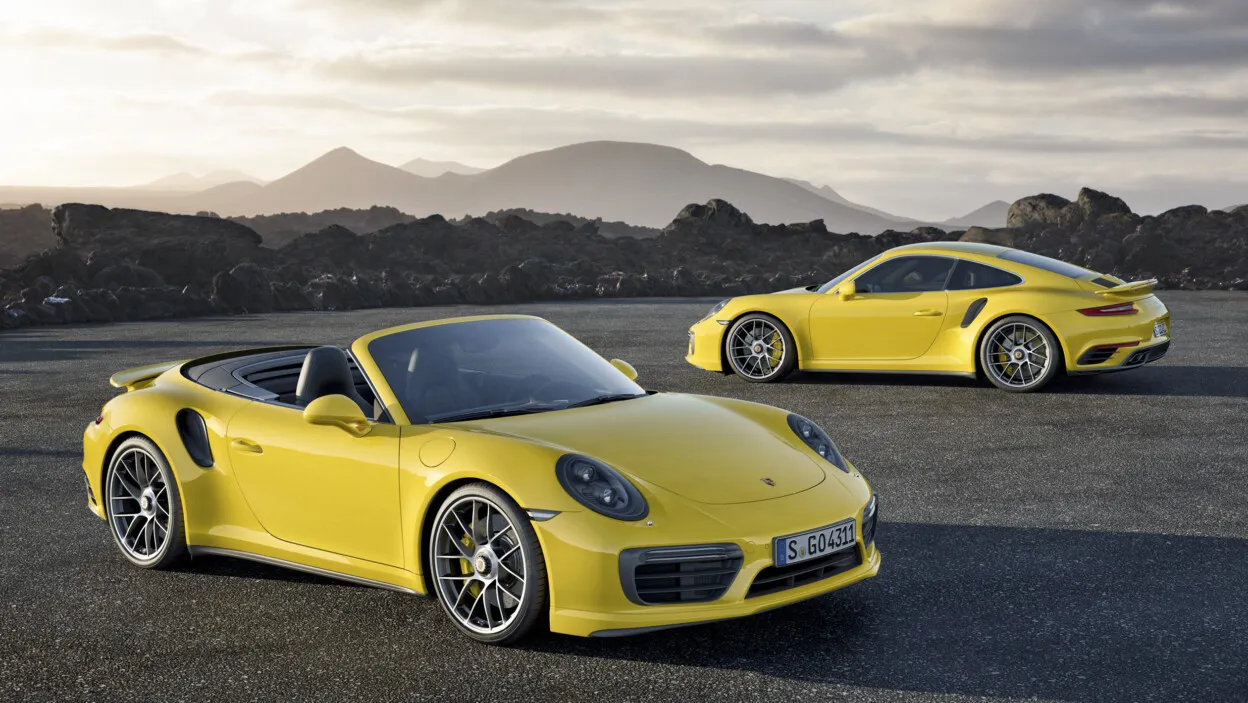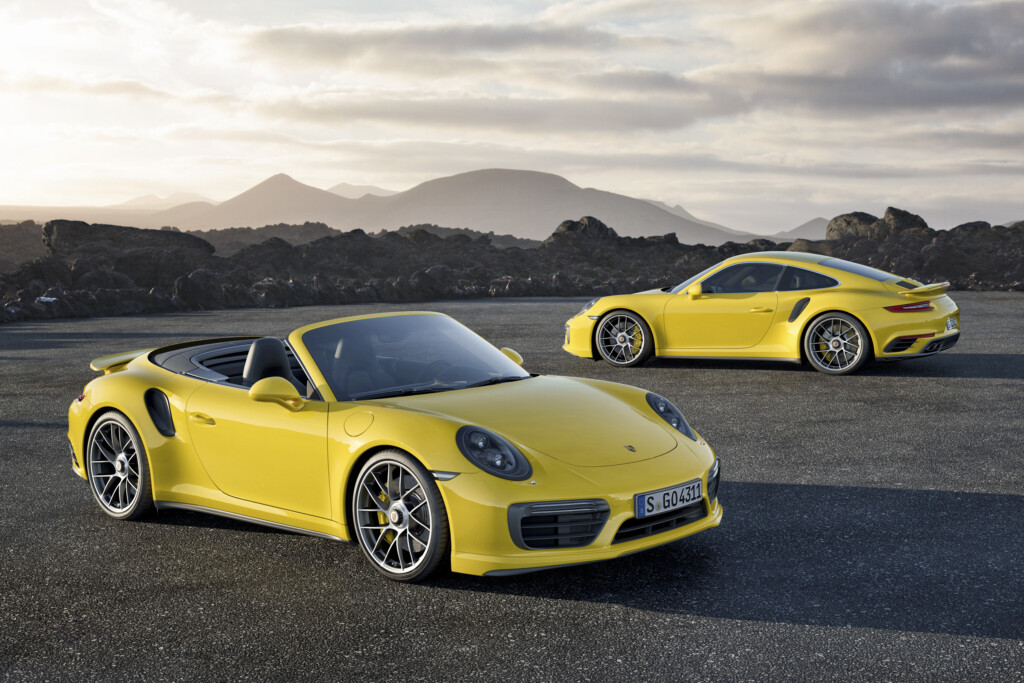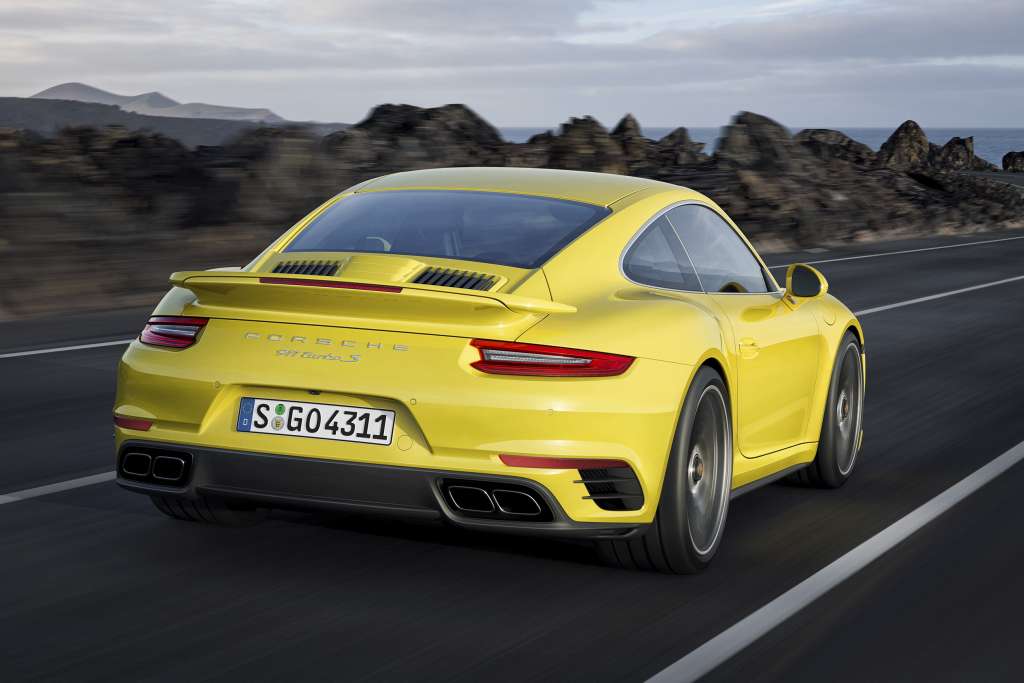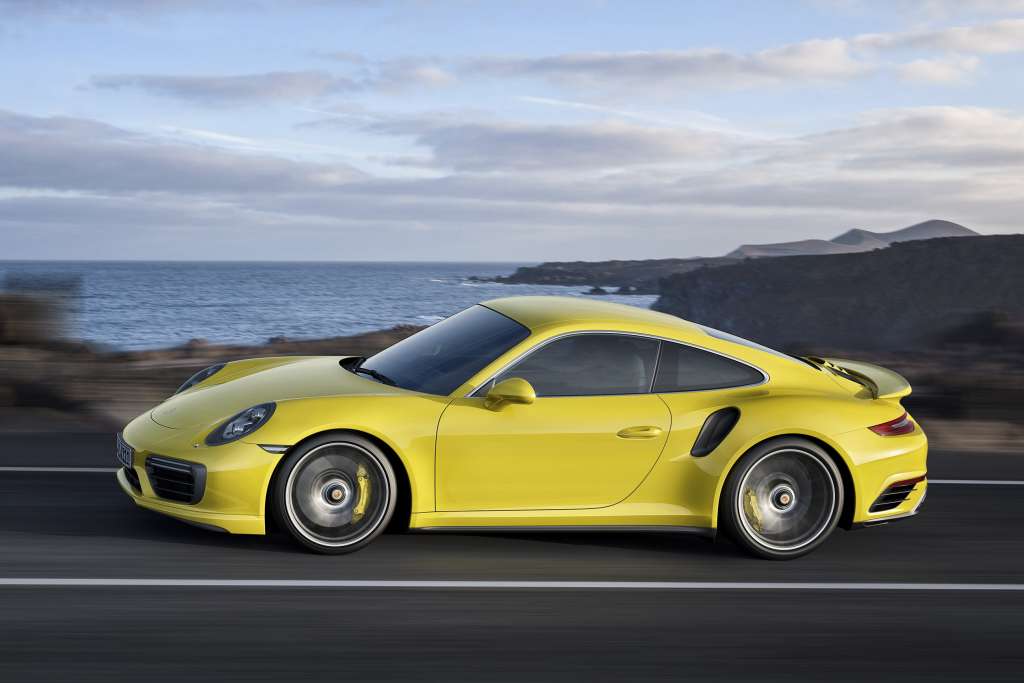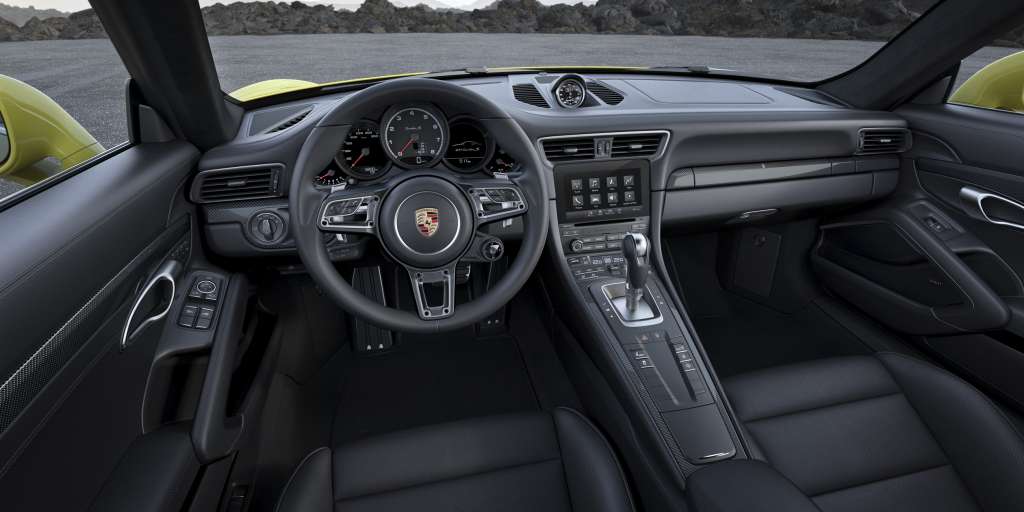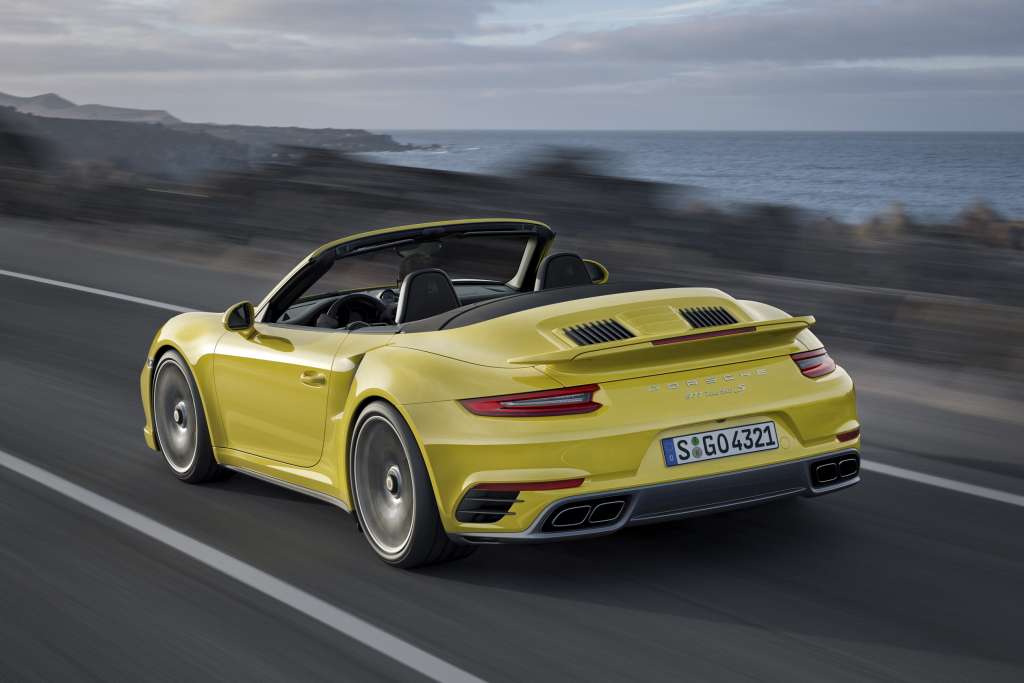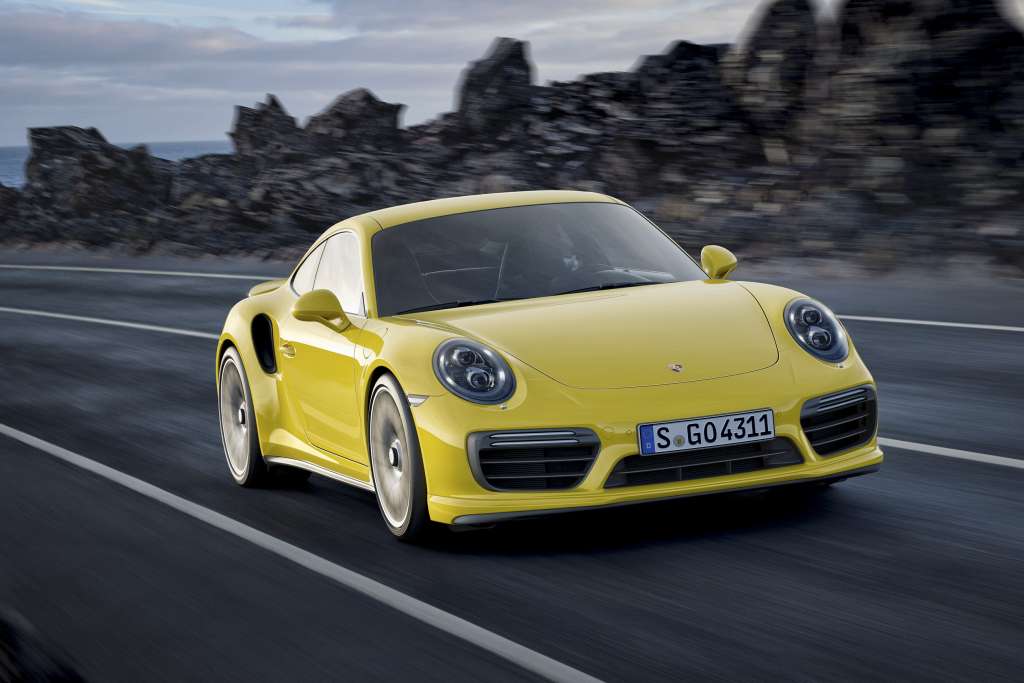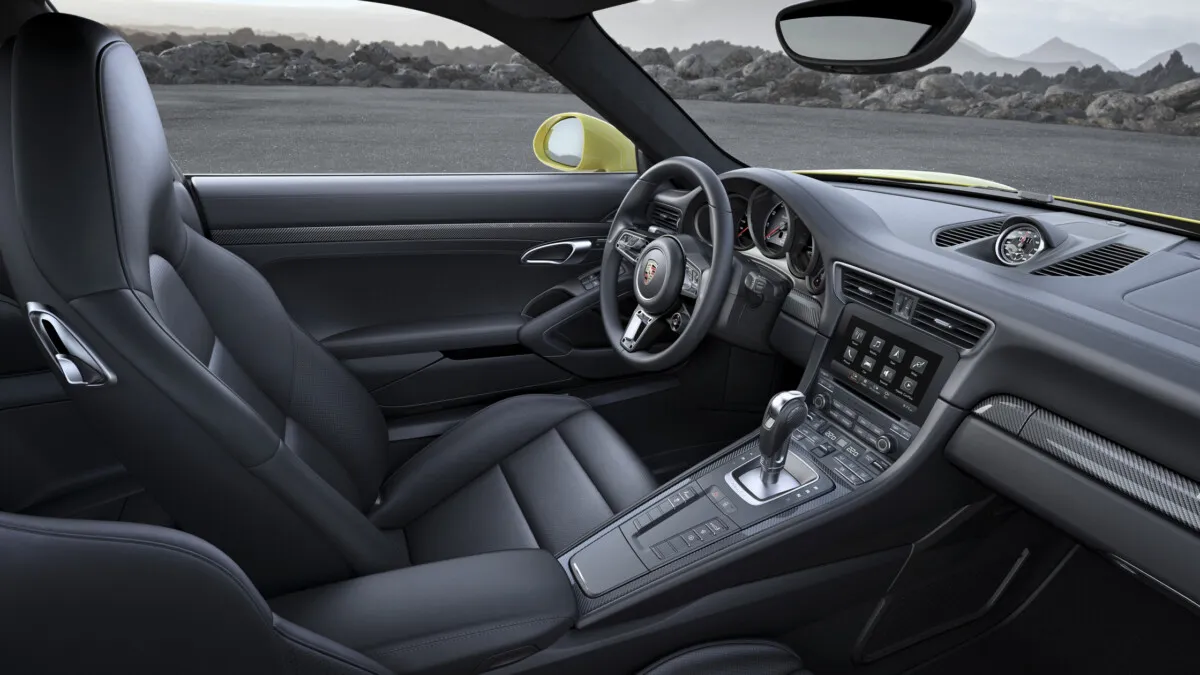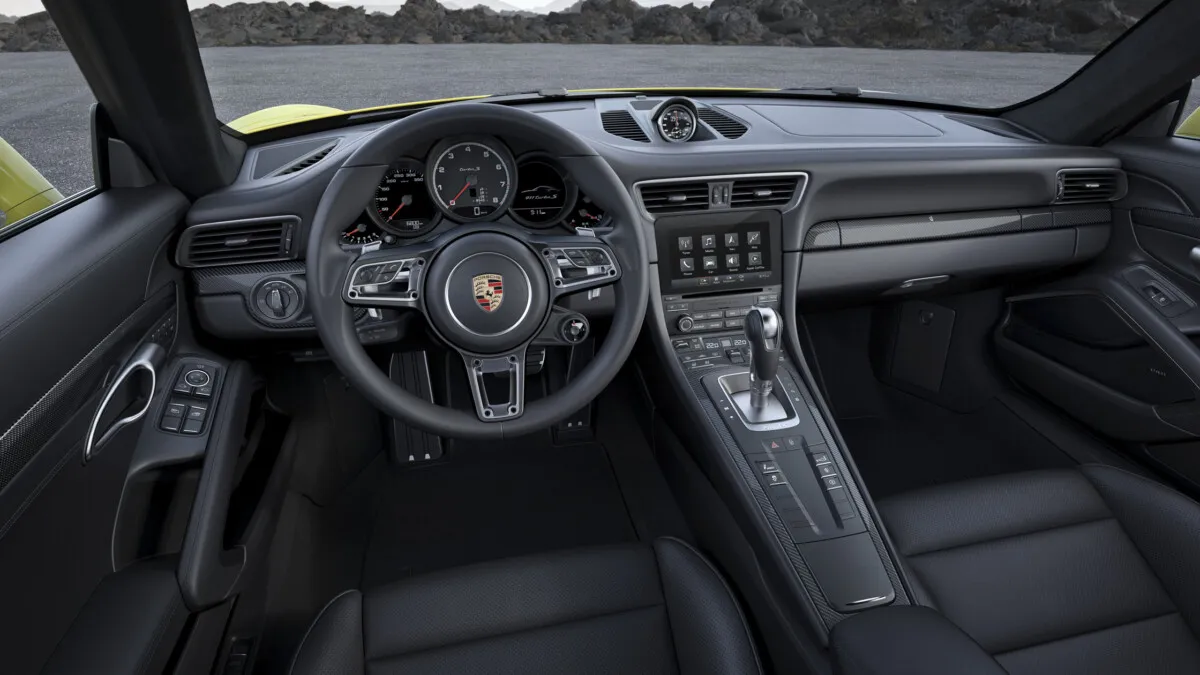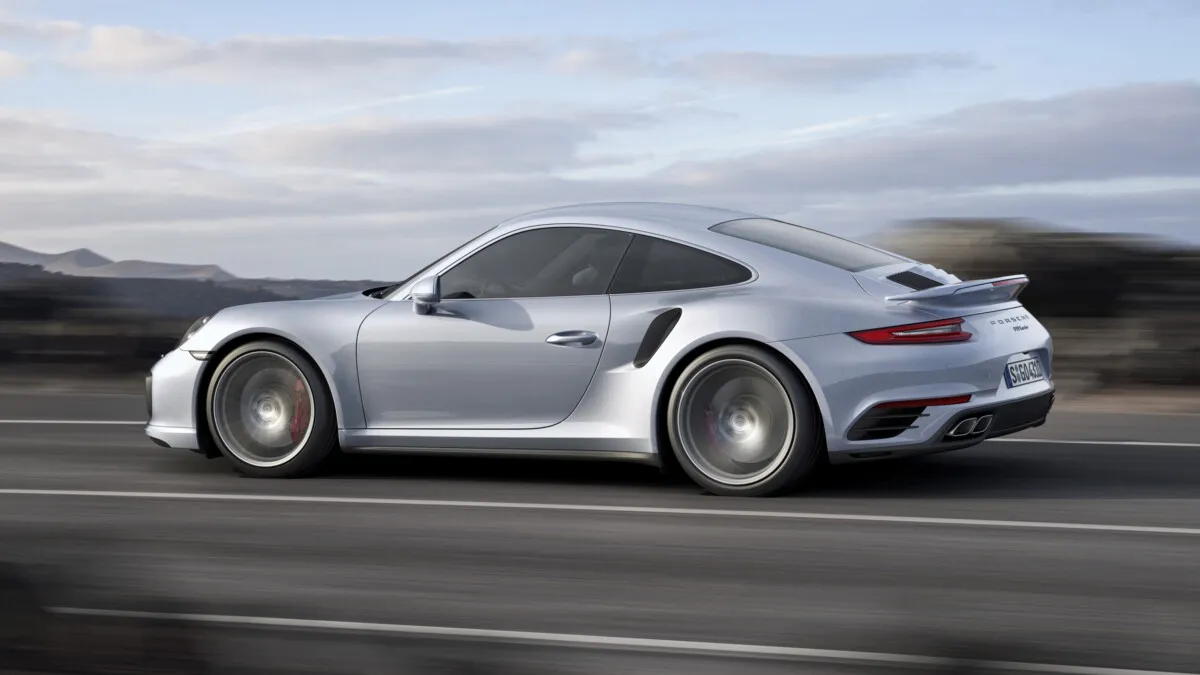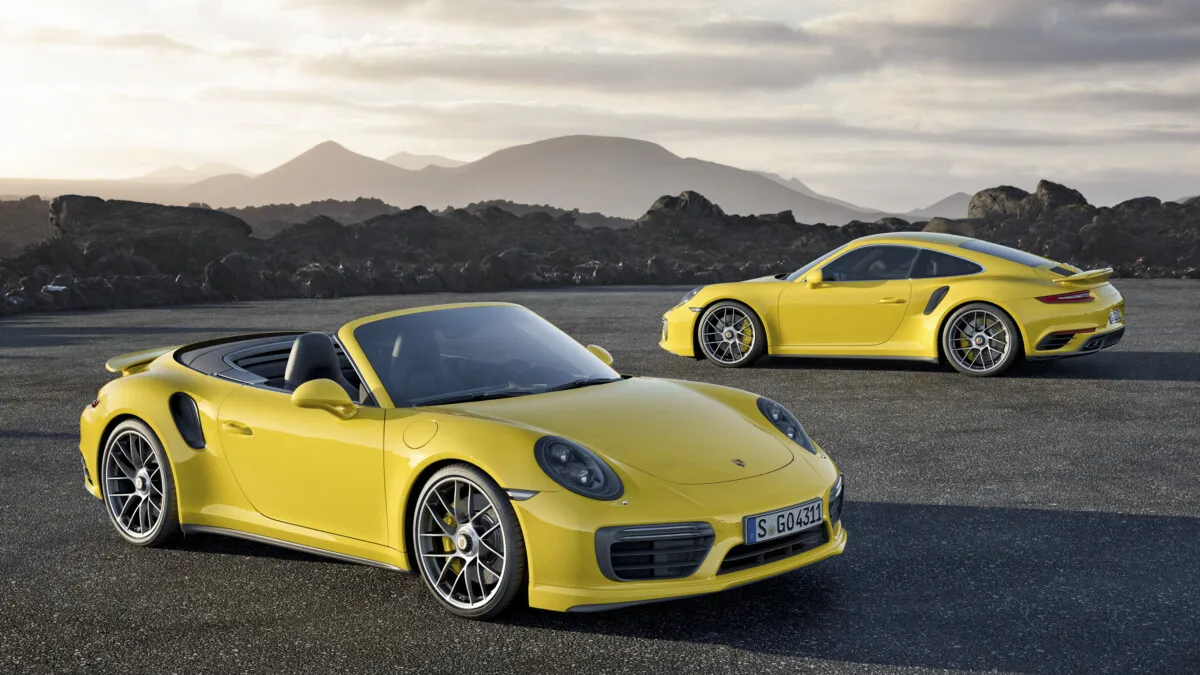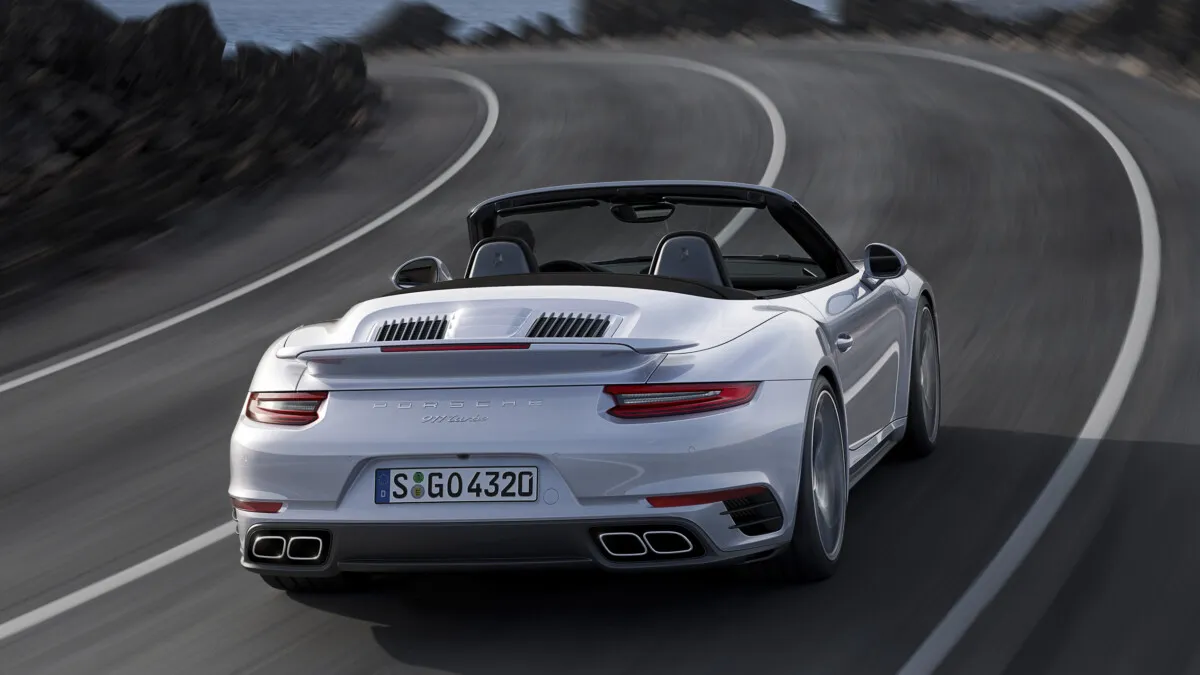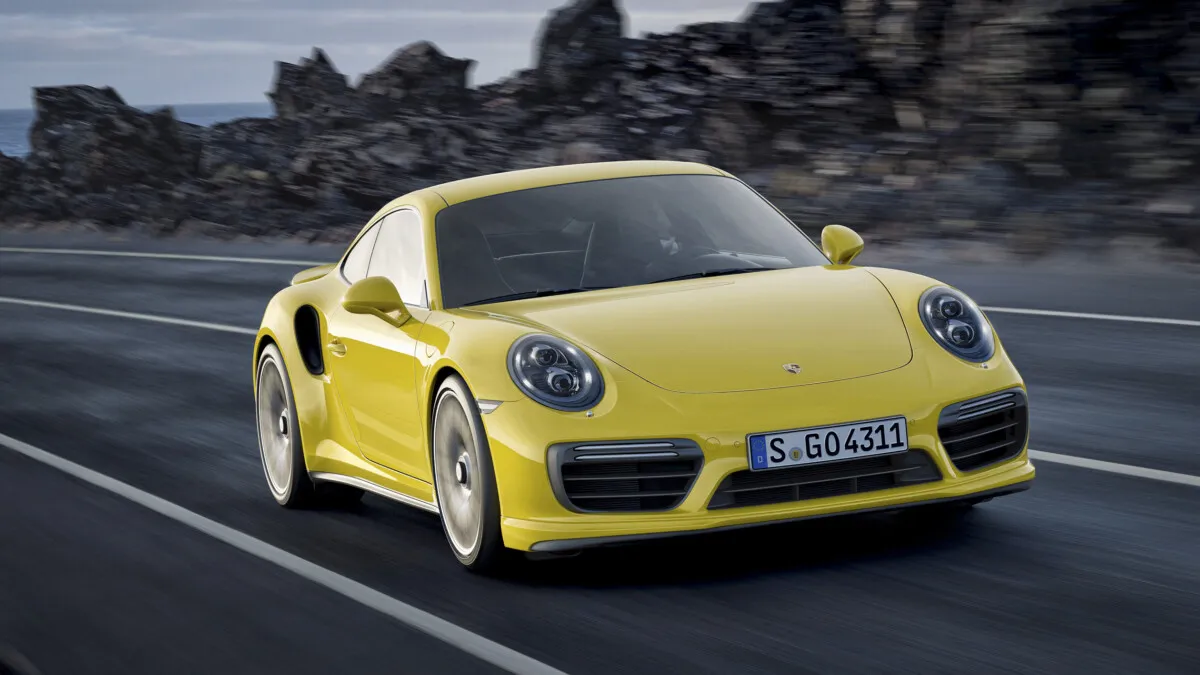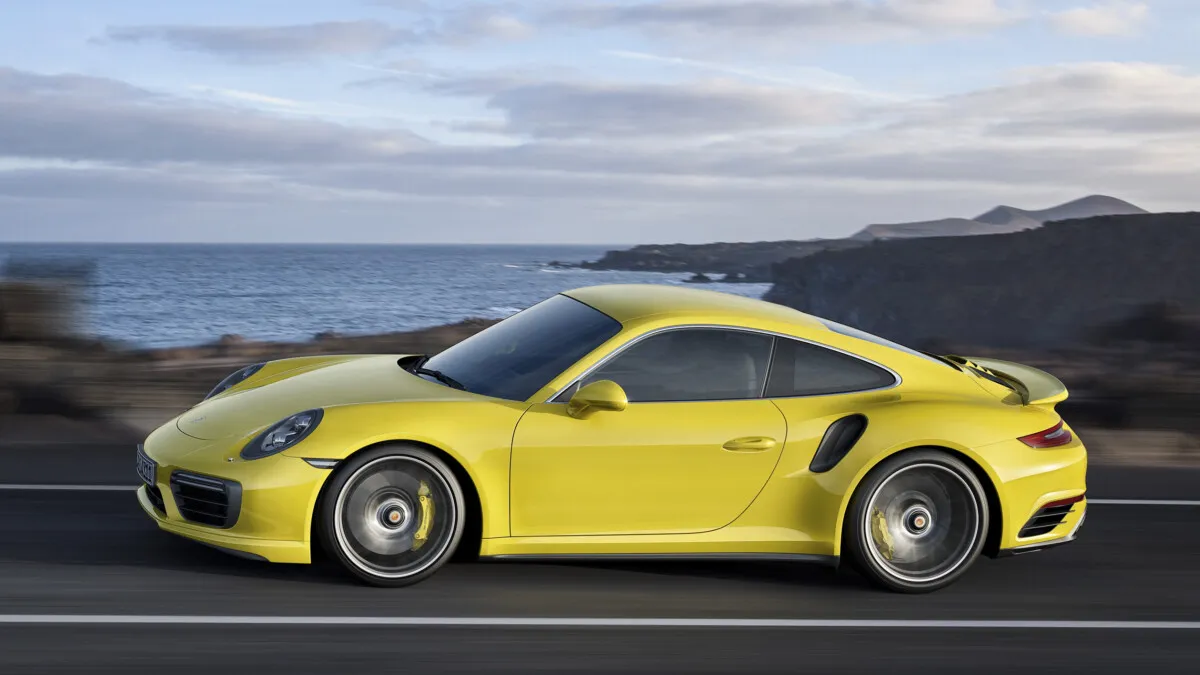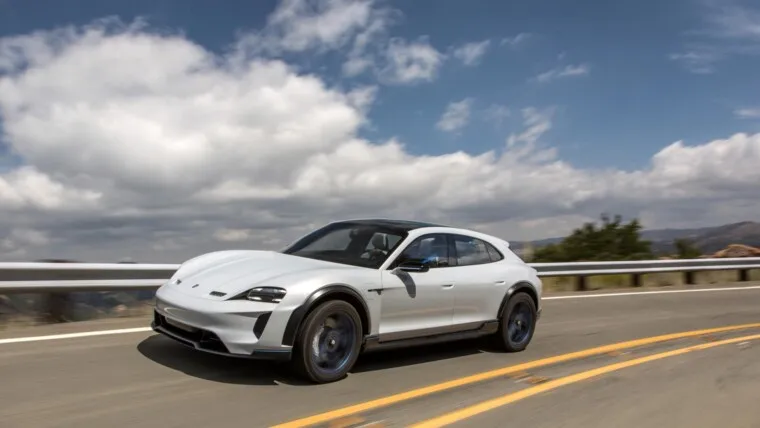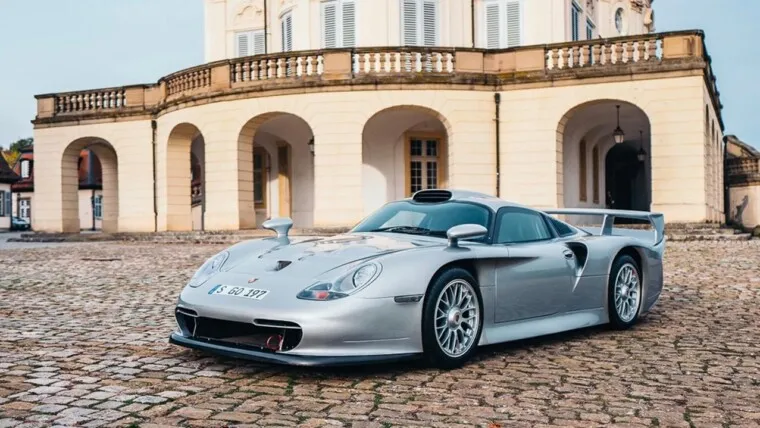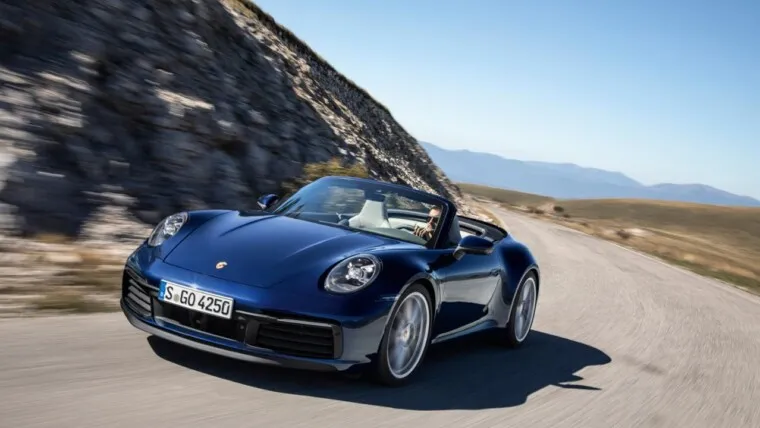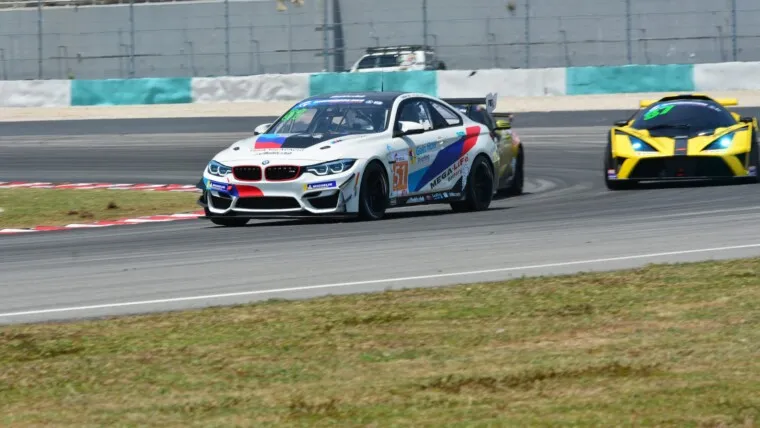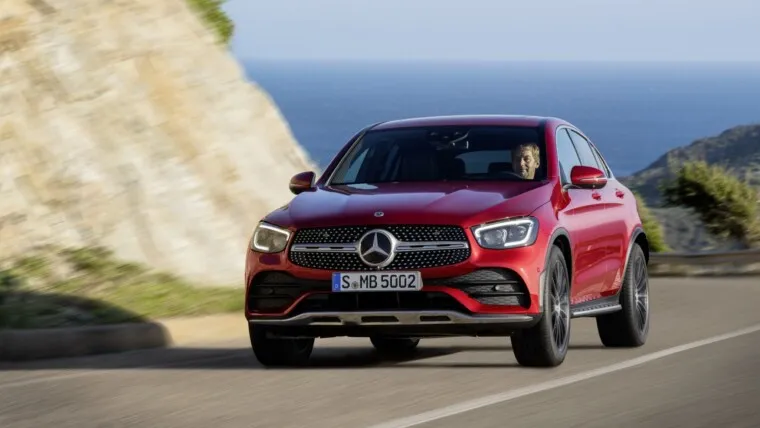At the 2016 North American International Auto Show in Detroit, Porsche will be presenting the top models of the 911 model series – the 911 Turbo and 911 Turbo S. These models will be available in both coupe and convertible versions.
The bi-turbo six-cylinder engine in the 911 Turbo with 3.8 litres of displacement now has a power output of 540 hp. This power gain was achieved by modified inlet ports in the cylinder head, new injection nozzles and higher fuel pressure. The 911 Turbo S on the other hand, now develops 580 hp thanks to new turbochargers with larger compressors.
The engines now also have what is known as a dynamic boost function to further improve engine response in dynamic operation. It maintains the charge pressure during load changes – i.e. when the accelerator pedal is released briefly. This is achieved by just interrupting fuel injection, whereas the throttle valve remains open. As a result, the engine reacts with practically no delay to another press of the accelerator pedal. The effects of this function are more pronounced in the Sport and Sport Plus modes than in Normal mode.
Overall, the new high-performance sports cars attain breathtaking driving performance, while fuel consumption is reduced even further. The 911 Turbo S Coupé sprints to 100 km/h in 2.9 seconds. Its top speed of 330 km/h is twelve km/h higher than before. The 911 Turbo reaches the 100-km/h mark in 3.0 seconds, and its top speed is 320 km/h – five km/h faster than the previous model. Nevertheless, the coupes only consume 9.1 l/100 km, and the convertibles 9.3 l/100 km. This represents 0.6 litres less fuel per 100 km for all versions.
The new GT sport steering wheel – 360 mm in diameter and with a design adopted from the 918 Spyder – comes with what is known as a mode switch as standard. It consists of a rotary ring with stepped positions that is used to select one of the four modes Normal, Sport, Sport Plus or Individual. The Individual setting lets the driver configure and store a very individual vehicle setup. Another new feature of the Sport Chrono Package is the Sport Response button at the centre of the mode switch. It preconditions the engine and gearbox for the best possible responsiveness at the push of a button. In this state, the vehicle can produce optimal acceleration for up to 20 seconds, such as for an overtaking manoeuvre. An indicator in the instrument cluster in the form of a running timer shows the driver the elapsed time.
Porsche Stability Management (PSM) in the 911 Turbo models now has a new PSM Sport Mode. A brief press of the PSM button on the centre console puts the system in a very sporty mode – which is independent of the driving programme that is selected. The separately switched PSM Sport mode alters the PSM’s intervention threshold much more than was the case in Sport Plus mode of the previous model. The new mode makes it possible to approach performance limits even more closely – e.g. on a circuit racetrack. In this mode, the PSM warning lamp lights up, and a message in the instrument cluster indicates that the PSM system’s contribution toward driving stability is limited. However, PSM still remains active in background, even in the PSM Sport mode.
The chassis of the new 911 Turbo models with PASM as standard now offers an even greater spread between performance and comfort. In addition, the 911 Turbo S offers a full complement of equipment for driving dynamics: PDCC roll compensation is standard as is the PCCB ceramic brake system. New options for all 911 Turbo models include the radar-based lane change assist and a lift system for the front axle that can be used to increase ground clearance by 40 mm at the front spoiler lip at low speeds.
Naturally, the new generation 911 Turbo adopts significant characteristics of the striking design of today’s Carrera models, supplemented by typical 911 Turbo special features. The newly formed front end with side airblades and precisely laid out narrow LED front lights with double fillets give the front end a wider look in combination with the additional fin in the central air intake. In a side view, the high-performance sports car boasts new 20-inch wheels.
The rear body was also thoroughly reworked. Eye-catching at first glance are the three-dimensional rear lights with their four-point brake lights and aura-like illumination, familiar from the 911 Carrera series. The exit openings for the exhaust system at the rear as well as the dual tailpipes were redesigned. The rear lid grille was also redesigned, and it now features three parts: the right and left sections have longitudinal louvres, and in the middle there is a separate cover for optimised air induction for the engine.
Along with the generation change in models, the newly developed infotainment system, PCM, is making its way into the cockpits of the 911 Turbo models as standard. This system can be made out by a multi-touch monitor with high-quality glass surface, which is perfectly integrated into the centre console, and it offers numerous new and extended connectivity functions such as Apple CarPlay thanks to the standard Connect Plus module. In addition, the system can now process handwritten inputs.
Moreover, mobile phones and smartphones can now be integrated more quickly, easily and comprehensively than before via Bluetooth or cable. Select vehicle functions can now be controlled remotely as well. As in the previous models, the Bose sound system is offered as standard while a Burmester system can be ordered as an option.

